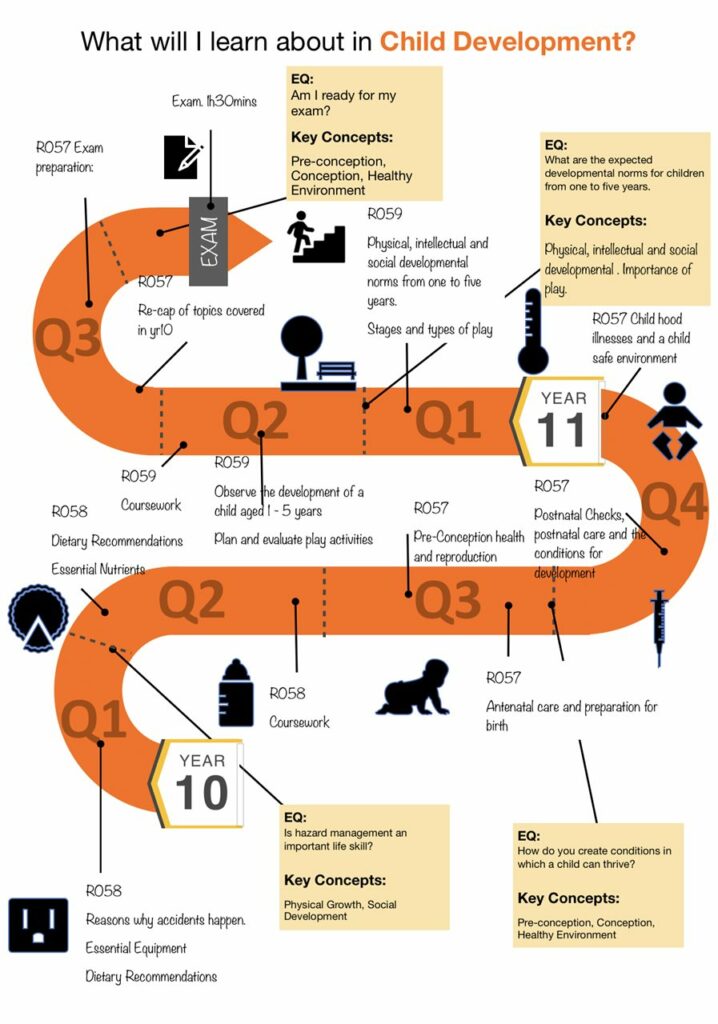
Child development is the only subject from the childcare sector and health sector on our curriculum. It is practical, accessible, fun to teach and exciting to learn, it inspires students to develop real-world skills to prepare them for their future. Child development equips students with independence and confidence in using skills that are relevant to the childcare sector and more widely. It covers all aspects of child development, from conception to five years, allowing students to understand and apply the fundamental principles and concepts of Child Development to include health and well-being, creating a safe and nurturing environment, the nutritional needs of children from birth to five years, and the development of children from one to five years. Students are encouraged to think creatively, innovatively, analytically, logically and critically to develop independence and confidence in using skills that would be relevant to the childcare sector and more widely.
It’s important to understand the key factors that impact on becoming pregnant, having a healthy pregnancy and creating a safe and healthy environment for the baby when it is born so that when working in the health sector you can help and support those in your care. Students will learn about the importance of both pre-conception health and creating conditions in which a child can thrive, including the prevention and management of childhood illnesses and creating a safe environment. Childcare settings may include childminders, day nurseries, parent and toddler groups, playgroups, crèches and forest schools. Students will look at equipment that is both suitable and safe for use along with the nutrition and dietary needs. To work with children in nursery and education settings, it’s vital to have a good understanding of how they develop. As well as developing physically, children develop socially and intellectually over time. Play is a key factor in a child’s development process, so being able to plan and complete appropriate play activities with them is essential for working in these settings.
The main body of the subject is held on Firefly so that students can refer back to all lessons both in and out of the classroom; this also means they do not miss any content if they are out of a lesson. All units start with an essential question that lays the foundation for investigation. In the classroom students are encouraged to ask questions and there is lots of opportunities for healthy discussions. The high performance learning attributes and disciplinary concepts are highlighted to students and embedded throughout delivery and tasks. Where opportunity arises we invite external speakers in from the NHS and local nurseries. To consolidate their learning of nutritional values and the use of play an under 5’s tea party is held by the students.
Students follow the learning map throughout their two year course. Completing their first piece of course work in year 10; their second piece of coursework and exam in year 11. Synoptic assessment is a built-in feature of this qualification. It means that students need to use an appropriate selection of their knowledge, understanding and skills developed across the qualification in an integrated way and apply them to a key task or tasks. This also helps students to build a holistic understanding of the subject and the connections between different elements of learning, so they can go on to apply what they learn from this qualification to new and different situations and contexts. This qualification also allows students the opportunity to gain broad, transferable skills and experiences that can be applied as they progress into their next stages of study and life and to enhance their preparation for future employment. In particular, they will develop both research and communication skills.
Students will be able to: